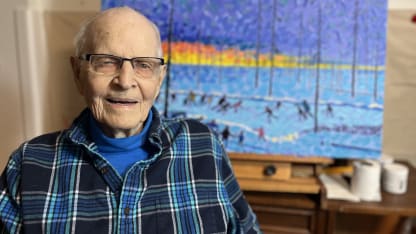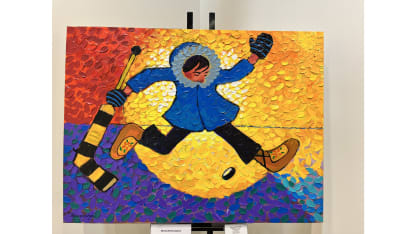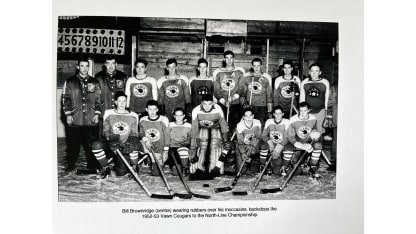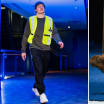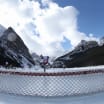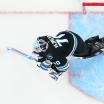One of your enduring messages throughout your work has been that the game can teach important life lessons. What are some of those?
“I have been very impressed with Ken Dryden and the books he has written. He talks about the importance of playing the game before you get to the stage where you need a coach. You learn to skate, to stick-handle, to make some moves on your own that are embedded for life. He really hit the nail on the head for me in his book about how important it is to let kids play without blowing the whistle or anything.”
Speaking of books, your book “The Moccasin Goalie” has been widely lauded. Was there a model for the characters in the book?
“My brothers Don and Bob were a huge part of it. I was the younger guy and, of course, Bob was my role model all my life. He started in Rosetown, Saskatchewan, as a midget, then he went to Saskatoon and played junior. Then he got drafted by the New York Rangers and played for the New York Rovers. He moved to New York. Can you imagine going from a town of 80 people to New York?
“He played there three years and made some good, marvelous headway. But he broke his leg and was laid out for quite a long time, but then he came back to Canada and went on to play and win the national championship in senior hockey, the Allan Cup. Anyway, he was my hero. You know, he was soft spoken, but a very, very smart guy. I just can't talk enough about his example.”
But, there is some of you in there, too, right? Even though you couldn’t skate because of your conditions.
“Yes. One year, the Junior C team in town was in the playoffs against quite a strong team from down the road, and the Vawn goalie got injured. They got permission from the league to let me play in goal without skates. We won 3-2. I was just totally amazed that we were able to pull it off.
“I played road hockey in the summer and pickup hockey on the ice in the winter. I would be out there with my moccasins, and a lot of times they would make me play goalie, but never in a real game.”
And, what about your paintings? They are collected by so many people, including professional hockey players. How did you develop your style and viewpoint?
“Most of my inspiration comes from my memories growing up and then watching pro hockey on television. It is so important to try to convey that it isn't just about hockey, to the kids and the adults. They get totally involved with wanting their kid to be a pro hockey player. They're thinking he's going to make a bundle of money, but hockey has so much more than just hockey skills. To become a great hockey player, you usually end up with a great character, you know?”
Who is your team when you watch the NHL?
“It's Calgary because I've lived there for so long and went to the games and did work for the Calgary Flames. Graphic design. I love watching all the stars because they're so amazing, the things they can do. I admire mostly skill and speed and strategy. The beauty of it is there's room for creativity within the game now.”
Being in Calgary, you have seen some good players come out of there. One of them in the League now is defenseman Cale Makar of the Colorado Avalanche. He recently had you do a painting for him. How did that relationship start?
“I was in the advertising business with Cale’s father, Gary. I used to go over to their house often. I’ve been watching Cale play since he was 12. He is quite the player. It’s amazing the things he is doing.”
You mentioned you did some work for the Flames. How did that come about?
“My brother, Bob, my hero, he owned the junior team in Calgary, the Centennials. I did all their programs and so much work for them, and then I did their logo. And then when I hooked up with the Flames, I was just part of a large agency. When they adapted black into the uniform in the 90s, I helped with the logo. I did work a little bit on the flame part, the flaming C, but it was more it wasn't a major overhaul. I loved the idea of a flaming letter, you know?”
The hallmark of many of your paintings is your ability to capture movement on the canvas, which is among the most difficult things to do as a painter. How did you develop that ability?
“I called myself the ultimate compensator because I couldn't play the game. I compensated with a fascination with the grace of motion. Like for instance, I love the low-angle shots by the camera on a broadcast when a defenseman picks up speed behind the net. It’s so full of amazing details.”
